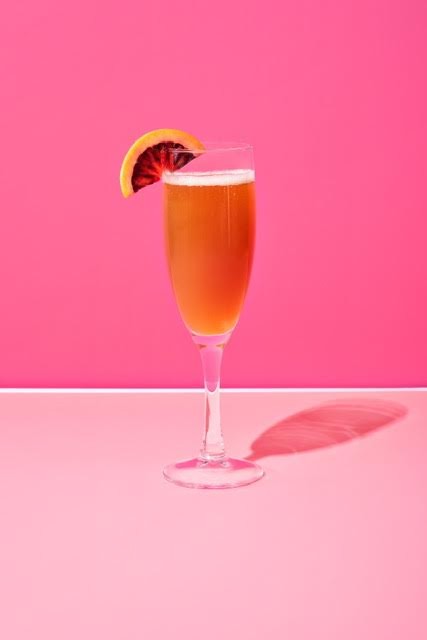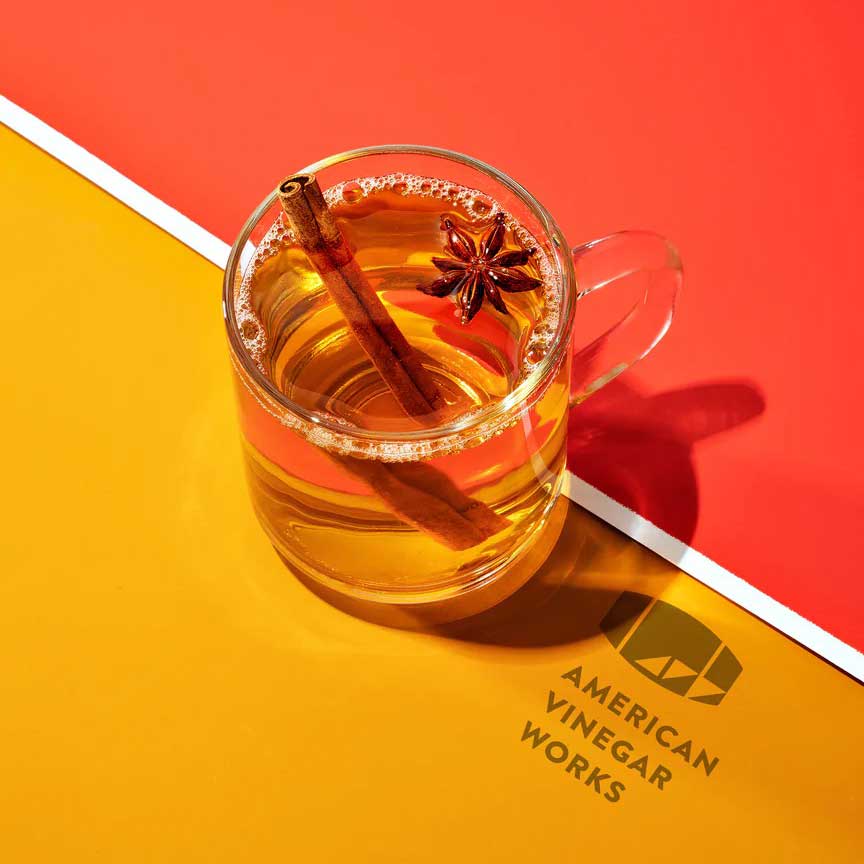Directions
Add cava to a champagne glass or coupe, top with remaining ingredients and enjoy! Garnish ideas follow in the notes. So many notes... but we know you are a reader!
Variation 1: Skip the vermouth and double the orange juice. The flavor is closer to a traditional mimosa with a little kick.
- Variation 2: Skip the orange juice completely and follow the rest of the recipe as is. I love this one. I found it savory and sophisticated. Because you are not adding cloudy orange juice the liquid is also clear with a dark caramel color and you can see the gentle bubbles. This may be more of a lunch or even pre dinner drink but certainly works for a foodie brunch. It is more gently herbaceous than sweet. Serve this one in a coupe and garnish with a floating dried apple or dried orange slice.
Recipe Note
Note on vinegar: Use any of our sweet and tangy ACV’s but you do want an ACV that has a apply sweetness to it to balance the acid. I would not recommend our Hot ACV for this drink.
Note on sparkler: You are going for yeast over sweet in your choice of sparkler. Aim for Cava or a sparkling wine made in the traditional Champagne method, not prosecco.
Note on variations: If you make the recipe as noted above you will end up with a liquid that has the color of the apple cider you get at your local orchard in season (i.e. a little brown and cloudy). The use of apple and the visual of apple cider (plus bubbles) is what makes this a Vermosa. Drop in some floating blueberries or a slice of fresh blood orange on the rim to brighten the presentation.
Note on volumes and cups: The recipe above will fill about half a champagne flute. You may want to double it. Or serve it in coupe glass which is one of the older wide champagne glasses. They requires a bit more work not to spill at brunch… but I think the old etched glass versions of coupes are beautiful.
Note on Spanish Vermouth: I use Bruno Marino or Yzaguirre, but any Spanish red vermouth will work here. Traditionally these are red, over white, and are drunk by themselves or with a slice of lemon over ice as an afternoon or pre-dinner drink. They are technically dry vermouths but the red vermouth are very easy drinking and do have some sweetness come across. They are generally less strongly herbaceous than their Italian counterparts so test your way carefully if you intend to sub the Spanish vermouth for your favorite Italian as it really does impact the flavor.



